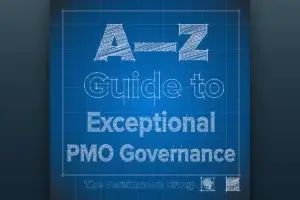Let’s Admit It. Estimates are Fake.
“When will it be done?”
It’s a relentless question. It echoes endlessly through boardrooms and project management meetings, often appearing to be the only question that matters.
We’ve built entire methodologies around answering it, created sophisticated tools to predict it, and staked careers on getting it right. But what if we’re asking the wrong question entirely? What if our obsession with accuracy is actually hindering our projects rather than helping them?
Estimates Are Possibilities, Not Predictions: Understanding Project Uncertainty
Let’s start by clearing up a common misconception: estimates are not the same as forecasts. While forecasts attempt to predict what will happen, estimates explore what could happen. They’re educated guesses based on current information, not crystal ball predictions of the future.
Humans are naturally bad at making precise estimates. This is because people tend to overlook critical details, such as other tasks they might be juggling. For example, someone might estimate that a task will take one week to complete. But is that estimate based on the assumption that they will work exclusively on that task for the entire week? In reality, one week of effort may be spread across multiple weeks due to competing priorities. These nuances are what make accurate estimates so challenging.
Think of it like weather forecasting. A meteorologist doesn’t say it will rain exactly 2.5 inches next Tuesday. Instead, they provide a range of possibilities based on current data. Project estimates should work the same way.
Why Project Estimates Should Never Be Single Numbers
Despite this, we often see estimates presented as single, precise figures. Instead, estimates should be expressed as ranges. “Most likely, the project will finish between July 15 and August 30. That said, there are a number of factors that could cause the estimate to move beyond that range…let’s talk about the ones we know about.”
Range estimates provide a more realistic way to plan work. We often see this approach in agile environments, where teams plan work in two-week sprints. In this case, the team isn’t committing to a specific day but rather providing a range—sometime within the sprint, the work will be completed. This flexibility makes it easier to accommodate uncertainties and variations in workload, leading to more reliable forecasting.
If you must indicate an estimate on paper, at the very least, phrase it as a range (“July 15 to August 30”). A single number estimate in project forecasting is misleading, which can lead to unnecessary stress or unrealistic expectations.
Why Good Project Estimates Invite Curiosity and Collaboration
When we present estimates as ranges, we open the door to valuable conversations. Instead of fixating on a single number, we can explore the factors that might push us towards the upper or lower end of our range. These discussions shift our focus from lagging indicators (Are we on schedule? Are we on budget?) to leading indicators (What risks are emerging? What opportunities can we capitalize on?).
Effective communication is essential when using range estimates, especially when dealing with customers or stakeholders. While range estimates offer flexibility, there are often significant milestones that need to be met to deliver the most value. It’s crucial for teams to understand these key dates and the business impact if they are missed. Without clear communication of these priorities, teams may feel like they’re chasing arbitrary deadlines, which can affect how work is prioritized and ultimately reduce the value delivered.
In project management, curiosity leads to collaboration. Suddenly, “When will it be done?” becomes “What could influence our timeline?”
Why Missed Project Estimates Are Opportunities for Learning
We often hear about projects “missing” their estimates. But this language implies the estimate was correct and the project was wrong. In reality, it’s usually the other way around.
When a project doesn’t align with its initial estimate, it likely means our initial understanding was incorrect or incomplete. This isn’t a failure; it’s new information. We should welcome it as an opportunity to refine our understanding and adjust our approach. In project management, missed estimates provide valuable learning opportunities.
Why Long-Term Project Estimates Become Useless After Six Months
Long-term estimates are particularly problematic. The further out we try to estimate, the more likely we are to be wrong. After about six months, most estimates become little more than wishful thinking. This doesn’t mean we shouldn’t plan for the long term, but we should hold those long-term plans loosely, ready to adapt as we learn more.
In project forecasting, long-term estimates can often be counterproductive if we aren’t willing to adapt based on new information.
Time to Value: The Metric That Matters More Than Project Estimates
Ultimately, the accuracy of our estimates is far less important than our ability to deliver value quickly and consistently. Instead of obsessing over whether we’ll hit a projected end date, we should focus on how we can deliver value sooner.
Can we break the project into smaller, valuable increments? Can we get something useful into our customers’ hands faster? These are the questions that truly drive project success. In modern project management, the concept of time to value is critical, often surpassing the importance of hitting exact project estimates.
The next time someone asks, “When will it be done?” in a project management meeting, dare to respond with a range, a set of conditions, and a discussion about value delivery and forecasting. It might feel uncomfortable at first, but it’s the first step towards a more honest, effective approach to project management.
After all, in the unpredictable world of projects, perhaps the most accurate estimate we can make is this: things will change, and we need to be ready to change with them.











